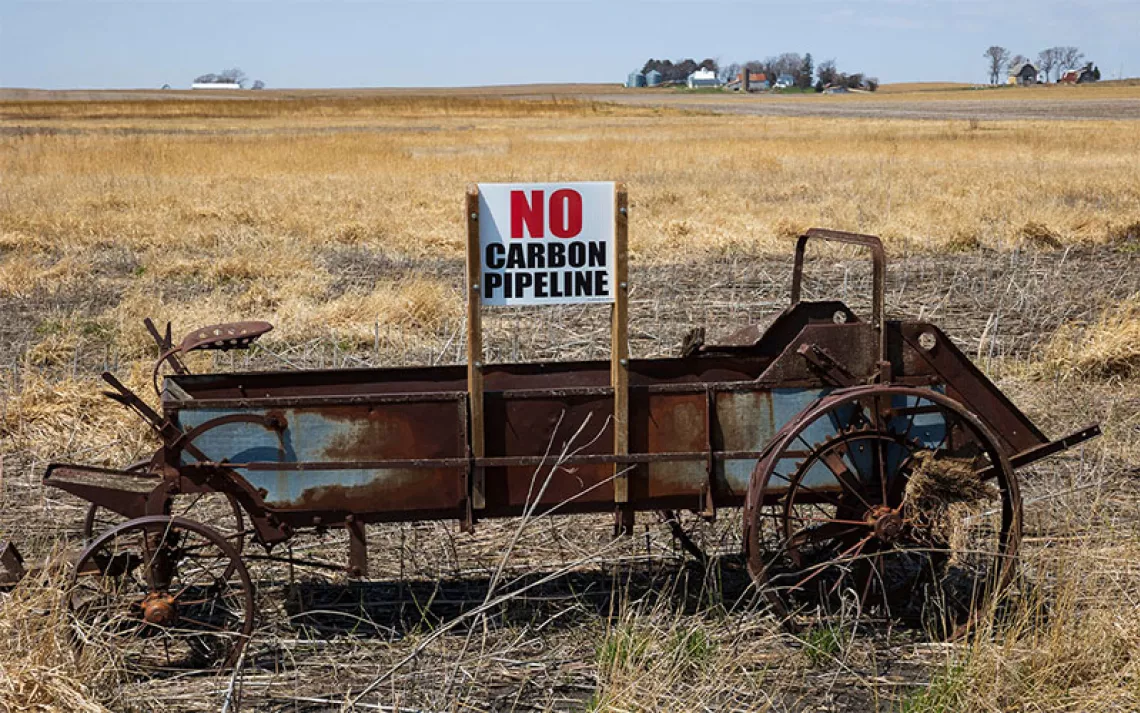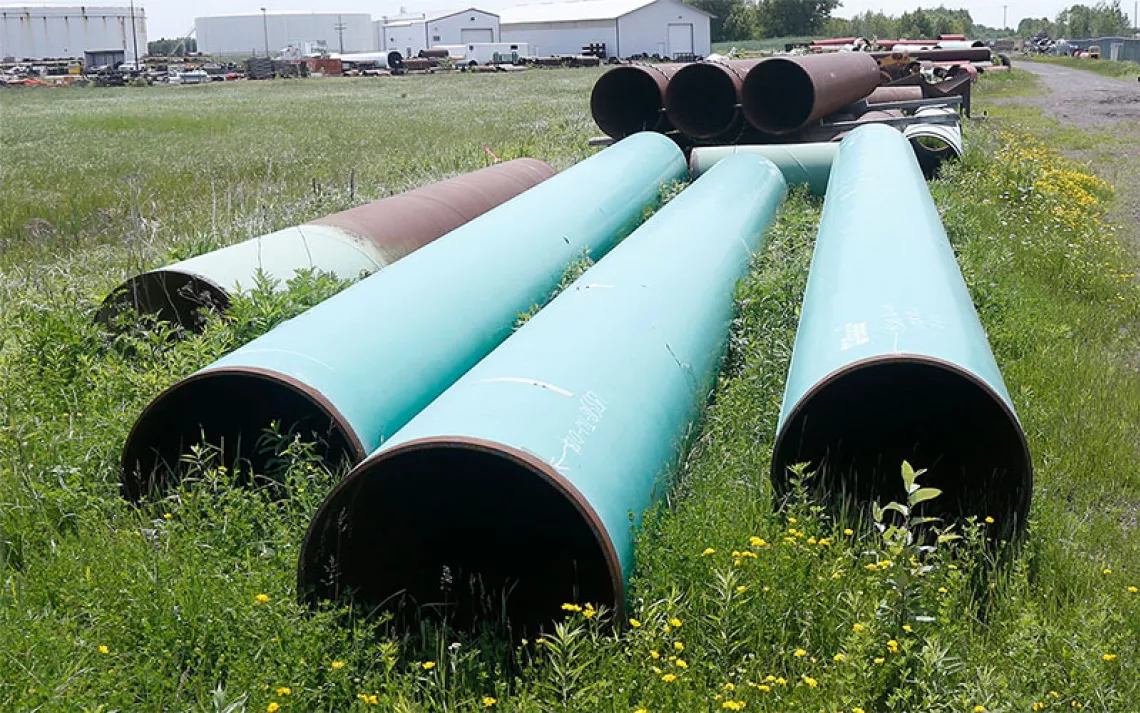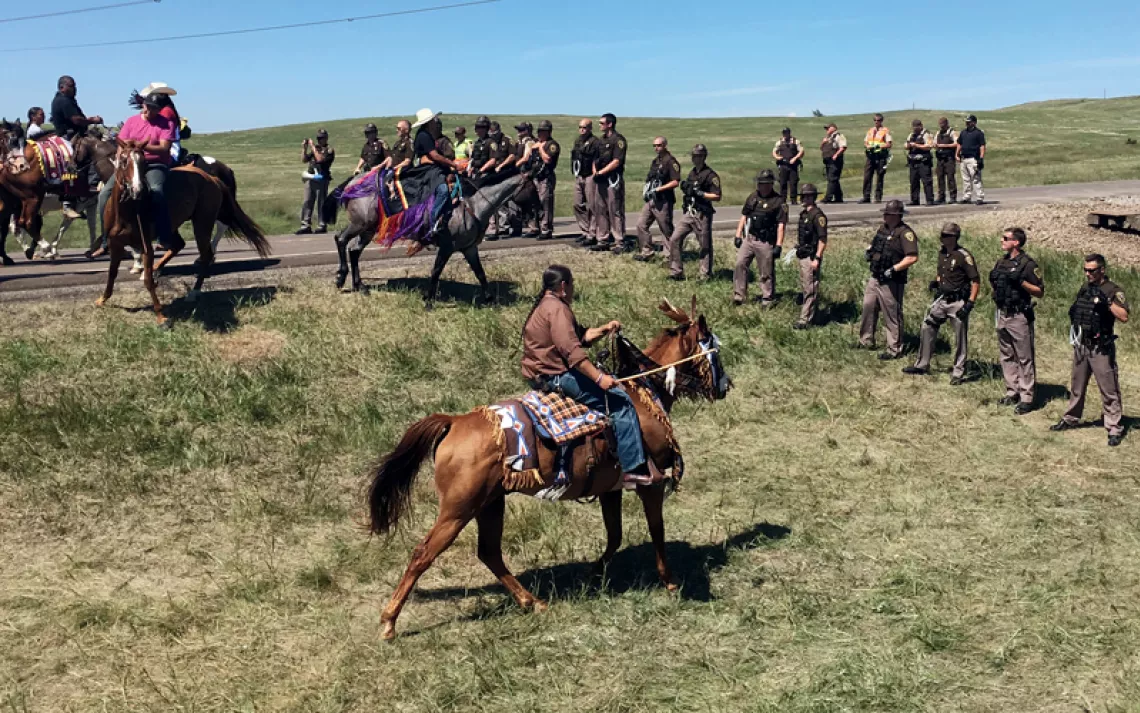Photos from the Front Lines of the Dakota Access Pipeline Resistance
Water protectors continue their defense in the face of police repression

All photos by Josué Rivas. Introduction by Jason Mark.
“Imagine: You’re in this field in North Dakota with no cell service, and you’re praying, and there are people with assault rifles and helicopters overhead—police and private security and the national guard arming themselves. And it’s all against indigenous people praying over the land—praying.” That’s how Tara Houska (Couchiching and Ojibwe) describes the scene at the Sacred Stone Camp near the Missouri River, where Native American activists and allies are in a desperate fight to prevent the completion of the Dakota Access oil pipeline. Houska, the national campaigns director for the native-led organization Honor the Earth, is one of the thousands of people—from at least 200 Native American nations—who have converged on the treaty lands of the Standing Rock Sioux to defeat the pipeline. On Thursday, the months-long standoff between water defenders and the oil infrastructure firm Energy Transfer Partners erupted into physical violence when police in riot gear and armed soldiers used pepper spray and bean bag projectiles against several hundred activists who had occupied part of the pipeline route. At least 141 people were arrested.
Photographer Josué Rivas spent eight weeks in North Dakota documenting the situation. His photographs illustrate the fierce spirit of resistance to fossil fuel development among the Native Americans gathered there. Rivas’s images also spotlight how the campaign to halt the pipeline project is part of a larger movement for native sovereignty, an effort for self-determination that represents the most muscular display of indigenous activism since the wave of American Indian Movement actions in the 1970s. As Houska says, “Standing Rock has become such an important moment for indigenous peoples in that we are standing together, because we all know how it feels. We know what this feels like. And the stories are the same, no matter where you go.”
Below are a handful of the images Rivas captured, accompanied by quotes from some of the water defenders.
—Jason Mark

“Indigenous nations are rising up in self-determination, to decide what will happen to their bodies, to their air, to their songs and their ceremonies. ‘Indigenous Rising’ is a concept that resonates across the diaspora of indigenous peoples. This is a critical moment, not just for climate change, but also for social justice and overall justice for all species. And indigenous communities are on the front lines.” —Dallas Goldtooth (Mdewakanton Dakota and Dińe), Keep It in the Ground organizer for the Indigenous Environmental Network


“We have to change the inevitability narrative that the big oil companies try to weave when they come into our territories. We have to undo that inevitability narrative.” —Clayton Thomas-Muller (Mathias Colomb Cree), campaigner at 350.org


“The indigenous people have always been there at the front, knowing that health is dependent upon water and land. And now everyone else is realizing it. Water is sacred, and we are using it to frack, to kill the planet.” —Tara Houska (Couchiching and Ojibwe), national campaigns director, Honor the Earth

WHAT YOU CAN DO
Stop the Dakota Access Fracked Oil Pipeline: Urge President Barack Obama to stand with tribes to protect our environment by repealing the approval of this dangerous fracked oil pipeline through the Midwest. Send a message today!
Join us by calling the White House to urge President Obama to investigate potential rights violations and reject this pipeline once and for all!: 1-303-816-3559
 The Magazine of The Sierra Club
The Magazine of The Sierra Club



